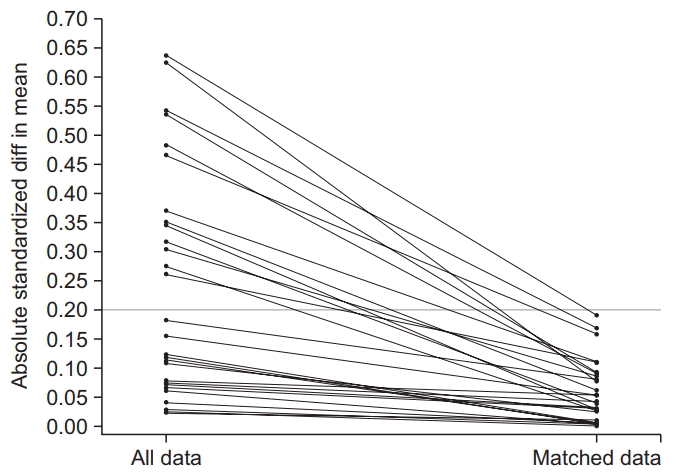1. World Health Organization. International classification of functioning, disability and health: ICF. Geneva: World Health Organization;2001.
2. Kang LJ, Hwang AW, Chen CL. Participation and environmental factors of children with physical disabilities in Taiwan. In : Tan U, editor. Physical disabilities: therapeutic Implications. Rijeka, Croatia: InTech;2017. p. 43–56.
3. Lenze EJ, Rogers JC, Martire LM, Mulsant BH, Rollman BL, Dew MA, et al. The association of late-life depression and anxiety with physical disability: a review of the literature and prospectus for future research. Am J Geriatr Psychiatry. 2001; 9:113–35.

4. Kim WH, Park YG, Shin HI, Im SH. The World Report on Disability and recent developments in South Korea. Am J Phys Med Rehabil. 2014; 93(1 Suppl 1):S58–62.

5. Shen SC, Huang KH, Kung PT, Chiu LT, Tsai WC. Incidence, risk, and associated factors of depression in adults with physical and sensory disabilities: a nationwide population-based study. PLoS One. 2017; 12:e0175141.

6. Gallegos-Carrillo K, Garcia-Pena C, Mudgal J, Romero X, Duran-Arenas L, Salmeron J. Role of depressive symptoms and comorbid chronic disease on health-related quality of life among community-dwelling older adults. J Psychosom Res. 2009; 66:127–35.

7. Bock JO, Hajek A, Weyerer S, Werle J, Wagner M, Maier W, et al. The Impact of Depressive Symptoms on Healthcare Costs in Late Life: Longitudinal Findings From the AgeMooDe Study. Am J Geriatr Psychiatry. 2017; 25:131–41.

8. McDermott S, Moran R, Platt T, Issac T, Wood H, Dasari S. Depression in adults with disabilities, in primary care. Disabil Rehabil. 2005; 27:117–23.

9. Robinson-Whelen S, Taylor HB, Hughes RB, Wenzel L, Nosek MA. Depression and depression treatment in women with spinal cord injury. Top Spinal Cord Inj Rehabil. 2014; 20:23–31.

10. Brunger M, Spyra K. Prevalence of comorbid depressive symptoms in rehabilitation: a cross-indication, nationwide observational study. J Rehabil Med. 2016; 48:903–8.

11. Park JH, Kim KW, Kim MH, Kim MD, Kim BJ, Kim SK, et al. A nationwide survey on the prevalence and risk factors of late life depression in South Korea. J Affect Disord. 2012; 138:34–40.

12. Muller R, Peter C, Cieza A, Geyh S. The role of social support and social skills in people with spinal cord injury: a systematic review of the literature. Spinal Cord. 2012; 50:94–106.
13. Hawker GA, Gignac MA, Badley E, Davis AM, French MR, Li Y, et al. A longitudinal study to explain the pain-depression link in older adults with osteoarthritis. Arthritis Care Res (Hoboken). 2011; 63:1382–90.

14. Hirsch O, Strauch K, Held H, Redaelli M, Chenot JF, Leonhardt C, et al. Low back pain patient subgroups in primary care: pain characteristics, psychosocial determinants, and health care utilization. Clin J Pain. 2014; 30:1023–32.
15. Wild B, Herzog W, Schellberg D, Lechner S, Niehoff D, Brenner H, et al. Association between the prevalence of depression and age in a large representative German sample of people aged 53 to 80 years. Int J Geriatr Psychiatry. 2012; 27:375–81.
16. Noh JW, Kwon YD, Park J, Oh IH, Kim J. Relationship between physical disability and depression by gender: a panel regression model. PLoS One. 2016; 11:e0166238.

17. Austin PC. An introduction to propensity score methods for reducing the effects of confounding in observational studies. Multivariate Behav Res. 2011; 46:399–424.

18. Rosenbaum PR, Rubin DB. The central role of the propensity score in observational studies for causal effects. Biometrika. 1983; 70:41–55.

19. Rosenbaum PR, Rubin DB. Reducing bias in observational studies using subclassification on the propensity score. J Am Stat Assoc. 1984; 79:516–24.

20. Rosenbaum PR, Rubin DB. Constructing a control group using multivariate matched sampling methods that incorporate the propensity score. Am Stat. 1985; 39:33–8.

21. Austin PC, Mamdani MM. A comparison of propensity score methods: a case-study estimating the effectiveness of post-AMI statin use. Stat Med. 2006; 25:2084–106.

22. Xu S, Ross C, Raebel MA, Shetterly S, Blanchette C, Smith D. Use of stabilized inverse propensity scores as weights to directly estimate relative risk and its confidence intervals. Value Health. 2010; 13:273–7.

23. Kim S, Lee Y, Hwang J, Oh M, Lee MK, Lee NH, et al. 2014 National Survey on people with disabilities. Sejong, Korea: Korean Institute for Health and Social Affairs;2014.
24. Hong I, Lee MJ, Kim MY, Park HY. Item-level psychometrics of the ADL instrument of the Korean National Survey on persons with physical disabilities. Qual Life Res. 2017; 26:2867–75.

25. Coca-Perraillon M. Local and global optimal propensity score matching. In : Proceedings of the SAS Global Forum 2007; 2007. Apr. 16-19. Orlando, FL. 1–9.
26. d’Agostino RB. Propensity score methods for bias reduction in the comparison of a treatment to a non-randomized control group. Stat Med. 1998; 17:2265–81.

27. Stuart EA. Matching methods for causal inference: a review and a look forward. Stat Sci. 2010; 25:1–21.

28. Rosenbaum PR. Observational studies. 2nd ed. New York: Springer;2002.
29. Rosenbaum PR, Rubin DB. Assessing sensitivity to an unobserved binary covariate in an observational study with binary outcome. J R Stat Soc Series B Stat Methodol. 1983; 45:212–8.

30. Taylor J, Taylor S. Psychological approaches to sports injury rehabilitation. Gaithersburg, MD: Aspen Publishers;1997.




 PDF
PDF Citation
Citation Print
Print




 XML Download
XML Download